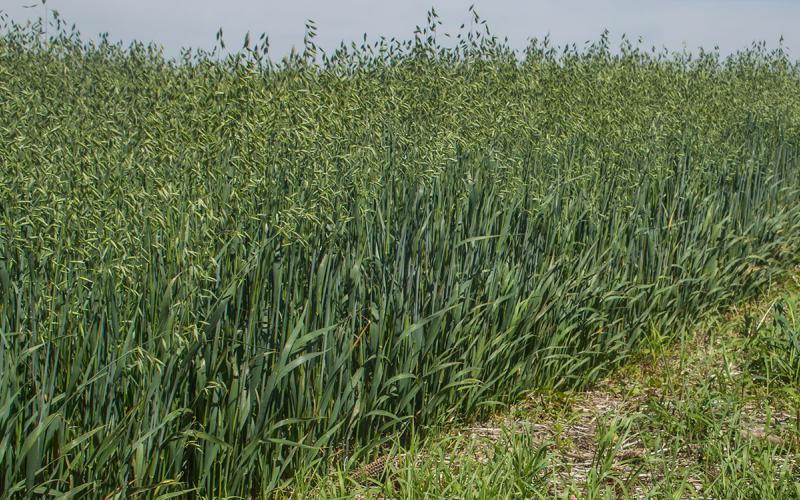Originally Published: May 1, 2020
Written with contributions by Jonathan Kleinjan, former SDSU Extension Agronomist.
Chloride (Cl-), the ionic form of chlorine, although not considered an essential nutrient, has long been observed to be highly beneficial to field crops. Chloride is known to play an essential role in plant development and osmoregulation. Specifically, the presence of Cl- in the plant cell membranes helps to regulate both leaf turgor pressure and leaf orientation. In other words, adequate levels of Cl- help plants to use water more efficiently.
Disease Suppression
In addition to playing a role in plant physiology, Cl- may also provide some level of disease suppression. Chloride may reduce the effects of plant disease by (i) enhancing plant host tolerance, (ii) providing direct suppression of plant pathogens, and, (iii) altering the environment to make conditions less favorable for disease survival or infection. Field studies conducted in South Dakota have confirmed the disease suppression abilities of Cl- applications on spring wheat for diseases including leaf rust, tan spot, and Septoria.
Yield Response
Chloride fertilizer applications on spring wheat in South Dakota have also shown an average yield response of 2.8 bu/acre. However, it should be noted that some spring wheat varieties do not respond to Cl- fertilization. In field studies evaluating multiple spring wheat varieties over the past several years, there was at least one variety that showed no yield response to Cl- fertilization. Soil testing should be used to determine the potential of Cl- fertilizer to influence the yield of spring wheat. The application of Cl- fertilizer is more likely to be profitable when soil test levels are below 15 lbs/ac in the top 2 feet.
Management Considerations
A Cl- soil test should be taken from 0-2 feet. This is commonly done by either collecting a 0–6 inch and 6–24-inch sample or collecting a 0–24-inch soil sample. Depending on the soils lab, the chloride result on your soil test report will be in either ppm or lbs/ac. If it is in ppm simply multiply the ppm value by 2 for each 6-inch soil sample depth increment. For example, multiply ppm by 2 for a 6-inch sample, multiply by 6 for an 18-inch sample, and multiply by 8 for a 24-inch sample.
The fertilizer recommendation is then calculated using the following equation:
60 - soil test Cl- lbs/acre = recommended Cl- lbs/acre
Example, soil Cl- test is 7 ppm in the 0–6-inch depth and 4 ppm in the 6–24-inch depth:
- Convert ppm to lbs/ac: 0–6 inches, 7 ppm x 2 = 14 lbs/ac Cl-; 6–24 inches, 4 ppm x 6 = 24 lbs/ac Cl-
- Sum Cl- from both depths: 14 lbs/ac + 24 lbs/ac = 38 lbs/ac Cl- total.
- Subtract total Cl- level from 60 for the Cl- recommendation: 60 – 38 lbs/ac Cl- = 22 lbs/acre Cl-fertilizer recommendation
- Convert the amount of nutrient (lbs/ac Cl-) to amount of fertilizer (lbs/ac fertilizer) by dividing the amount of Cl- needed by the percent of Cl- in the fertilizer. In this example, we will use potash also known as KCl (0-0-60) that contains 45% Cl- since it is one of the most economical forms of Cl- to apply: 22 lb/acre Cl- / 0.45 = 49 lbs/acre KCl
It should be noted that an application of 15 lb/acre Cl- is the minimum recommendation. Fertilizer can be broadcast or applied with the seed as research has shown no advantage to seed placement of Cl- over a broadcast application. Although Cl- is not considered an essential plant nutrient, the addition of Cl- fertilizer has improved spring wheat production and should be considered when developing fertility plans.
References
Clark, J., J. Gerwing and R. Gelderman. 2020. Fertilizer Recommendations Guide. SDSU Extension pub no. EC750 (revised).


